I was trying to implement an XOR gate with tensorflow. I succeeded in implementing that, but i don't fully understand why it works. I got help from stackoverflow posts here and here. So both with one hot true and without one hot true outputs. Here is the network as i understood, in order to set things clear.
My Question #1:
Notice the RELU function and Sigmoid function. Why we need that(specifically the RELU function)? You may say that in order to achieve non linearity. I understand how RELU achieves non-linearity. I got the answer from here. Now from what I understand the difference between using RELU and without using RELU is this(see the picture).[I tested the tf.nn.relu function. The output is like this]
Now, if the first function works, why not the second function? From my perspective RELU achieves non-linearity by combining multiple linear functions. So both is linear function(upper two). If first one achieves non linearity, 2nd one should too, shouldn't it? The question is that, without using the RELU why the network gets stuck?
XOR gate with one hot true outputs
hidden1_neuron = 10
def Network(x, weights, bias):
layer1 = tf.nn.relu(tf.matmul(x, weights['h1']) + bias['h1'])
layer_final = tf.matmul(layer1, weights['out']) + bias['out']
return layer_final
weight = {
'h1' : tf.Variable(tf.random_normal([2, hidden1_neuron])),
'out': tf.Variable(tf.random_normal([hidden1_neuron, 2]))
}
bias = {
'h1' : tf.Variable(tf.random_normal([hidden1_neuron])),
'out': tf.Variable(tf.random_normal([2]))
}
x = tf.placeholder(tf.float32, [None, 2])
y = tf.placeholder(tf.float32, [None, 2])
net = Network(x, weight, bias)
cross_entropy = tf.nn.softmax_cross_entropy_with_logits(net, y)
loss = tf.reduce_mean(cross_entropy)
train_op = tf.train.AdamOptimizer(0.2).minimize(loss)
init_op = tf.initialize_all_variables()
xTrain = np.array([[0, 0], [0, 1], [1, 0], [1, 1]])
yTrain = np.array([[1, 0], [0, 1], [0, 1], [1, 0]])
with tf.Session() as sess:
sess.run(init_op)
for i in range(5000):
train_data = sess.run(train_op, feed_dict={x: xTrain, y: yTrain})
loss_val = sess.run(loss, feed_dict={x: xTrain, y: yTrain})
if(not(i%500)):
print(loss_val)
result = sess.run(net, feed_dict={x:xTrain})
print(result)
The code you see above implements the XOR gate with one hot true outputs. If i take out tf.nn.relu, the network gets stuck. Why?
My Question #2: How can I understand if a network is going to get stuck on some local minima[or some value]? Is it from the plot of cost function (or loss function)? Say, for the network designed above, I used cross entropy as the loss function. I could not find the plotting of cross entropy function. (If you can provide this, this would be very helpful.)
My Question #3:
Notice on the code there is a line hidden1_neuron = 10. It means that i have set the number of neurons in the hidden layer 10. Reducing the number of neurons to 5 makes the network to get stuck. So what should be the number of neurons on hidden layer?
The output when the network works the way it is supposed to :
2.42076
0.000456363
0.000149548
7.40216e-05
4.34194e-05
2.78939e-05
1.8924e-05
1.33214e-05
9.62602e-06
7.06308e-06
[[ 7.5128479 -7.58900356]
[-5.65254211 5.28509617]
[-6.96340656 6.62380219]
[ 7.26610374 -5.9665451 ]]
The output when the network gets stuck:
1.45679
0.346579
0.346575
0.346575
0.346574
0.346574
0.346574
0.346574
0.346574
0.346574
[[ 15.70696926 -18.21559143]
[ -7.1562047 9.75774956]
[ -0.03214722 -0.03214724]
[ -0.03214722 -0.03214724]]
